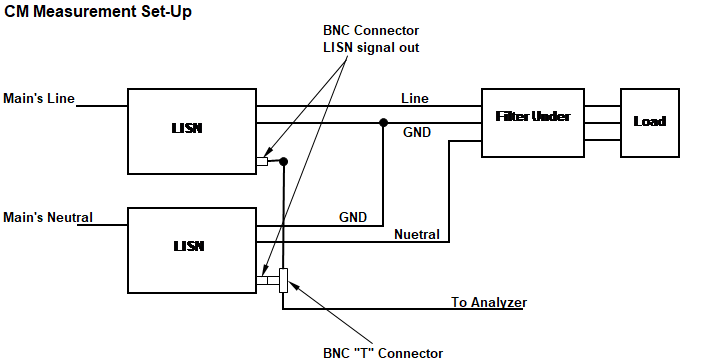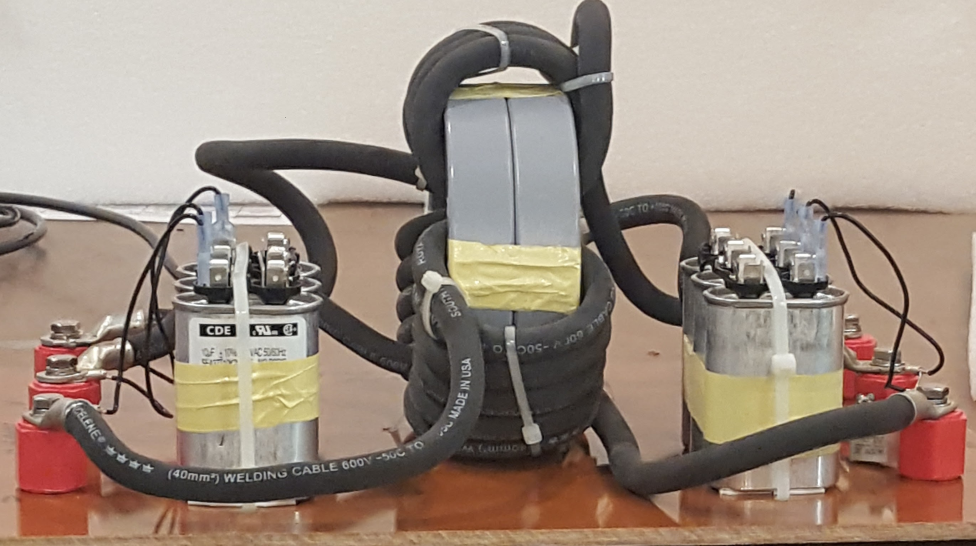Below are the questions asked during the live event, along with their respective answers.
Q: Is conducted noise only a result of radiated noise that is induced in the conductors to the unit?
A: The conducted emissions (noise) in most cases are generated by electronic switches and they are of lower frequencies. Based on experience radiated emissions have little effect on conducted emissions.
Q: If I am designing a filter for a failed unit should I try to reduce CM or DM mode first? Or does it just depend?
A: It depends on failed frequencies, around 10 KHz the failure is most likely DM, around 150 KHz CM. It is advisable to measure CM noise per the following test set up to differentiate CM from DM noise.

Q: For device with multiple dc/dc converters, should each converter have EMI filter?
A: Keep in mind, the conducted emissions measurement is performed on mains power line entering the system. Therefore, depending on how the mains power is configured, if the mains power is common for all inverters one filter at the power cable entering the system should be adequate. Otherwise each converter should have an EMI filter.
Q: For commercial of the shelf DC-DC converters, it is necessary to have a separate EMI filter at front end?
A: Not necessarily because it depends where and how the inverted is used by the end customer. Testing an inverter with resistive load and designing an EMI filter does not guaranty that the inverter will pass with non-resistive (complex) loads end customer will be using.
Q: Do clamp-on ferrites perform any better or worse than solid-core ferrites in general?
A: Solid is always better…
Q: You showed an example of a filter you made for a military customer to address their failing conducted EMI tests. Instead of prototyping a solution and sending to customer to test (trial and error), could you have simulated the solution first to know how much improvement to expect?
A: The initial EMI filter circuits are designed using PSPICE base software with resistive load, because the impedance of the system/product is unknown most of the time. Therefore the EMI solution obtained is seldom the final solution. The final tuning of an EMI filter does not have to be trial and error, if the designer knows the performance of each filter component; he/she will make the proper changes to the filter circuit to enhance filter performance. The initial prototype filter for conducted emissions test can be an open frame (similar to the picture 1 below) to allow for filter tuning.

Q: I have filter creating a 60 Hz buzzing sound under heavy AC load. Opening and fully potting the filter did not stop the sound. Any ideas how to stop this sound?
A: Cores specially laminated cores at power line frequency (50/60/400Hz) have natural vibration that generate the buzzing noise. Potting will help, but if the core itself is not impregnated properly you could still hear the buzzing noise. FYI, the capacitors could also make buzzing noise also if the they are wound loose and not (heat and vacuum) cured properly.
Q: Does lowering radiated emissions lower conducted emissions and vise-versa?
A: It is recommended to perform conducted emissions test first because it will help reducing the radiated emissions, it rarely works the opposite.
Q: I’ve seen CM chokes wound with windings separated on each side, as well as wound bifilar. Are there applications that would use one or the other winding style, or does it matter?
A: In theory it does not matter which way the CM coil is wound. There are a few advantages to separate the windings on a CM coil to name a few, a) prevents possible shorts between windings due to scratched on the varnished copper wires during coil winding, b) each winding lead wires do not have to be marked individually for proper wiring in the circuit, c) creepage and distances are better controlled.
Q: Is there a way to determine whether a given noise spectrum is due to CM or DM?
A: You can measure CM from the test set up picture 1 above.
Q: Do you have any filter recommendations to mitigate EFT?
A: EMI filters should help to mitigate EFT. But, you may also incorporate MOV’s and/or Gas Tubes external to the EMI filter if necessary.ate CM from DM noise.
